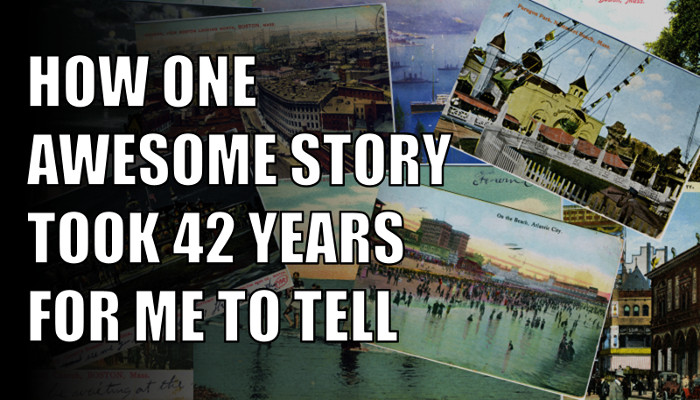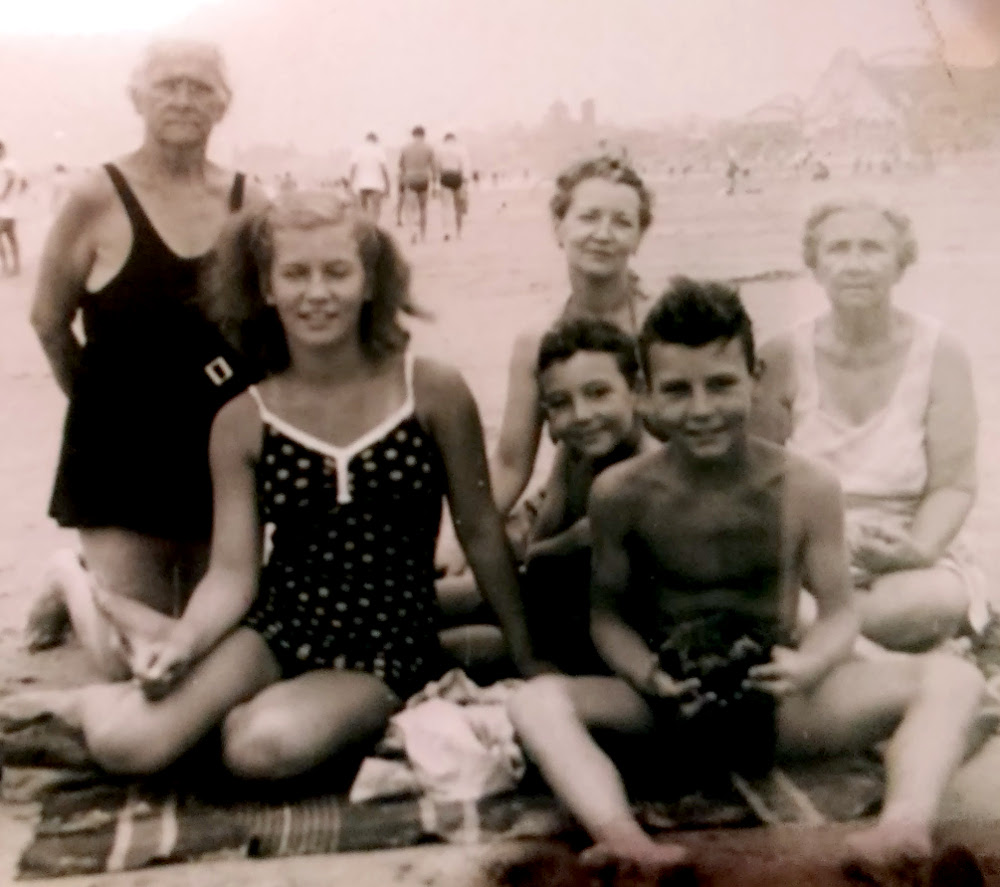
It’s called a green leaf, Ancestry.com’s notification symbol for a new genealogical hint to follow. Most ancestry stories start by clicking on a leaf. Mine, however, ended with one. On February 10, 2018, the clues hidden behind this iconic symbol led me to solve a forty-two-year-old mystery.
The story starts with a thirteen-year-old me exploring the dusty attic of an old New England home. Daylight streamed through a double-window, illuminating an open-top cardboard box filled with various personal items. I sorted through its contents until something caught my attention–a stack of old postcards filled with turn-of-the-century images of New England, New York, and Washington D.C.
Those post cards have followed me ever since. Periodically, I’d pull them out of a desk drawer and comb their ancient images for any story clues. Little did I know that the real story awaited on the flip sides of those cards. One day in 2012, as I’d done hundreds of times before, I pulled the cards out of the drawer. But this time was different. Instead of performing my usual photographic inspection, I decided to study their fountain-pen inscribed messages.
A pattern emerged quickly. Eighty-six of the postcards were addressed to a Mrs. Lizzie Milligan and my inner storyteller wanted to know more. Who was she? What was she like? Who were Nellie, Sadie, Frank, Ella, Tom, Joe, Ruthie, Margaret, Debby, Mamie, and Kathryn? Why did so many of the messages end with “give my love to the girls?” Who were they? Her daughters? Her sisters? Something more…hmm…interesting?
And so I went to work. Google and Ancestry.com helped me uncover three major life milestones:
- Elizabeth Nestor was born in Montreal, Quebec, Canada in January 1868
- She married Patrick Milligan on June 22, 1885
- Elizabeth and Patrick’s son, Edward, was born on March 24, 1886
Three simple facts that described a typical family story. Until I uncovered a less typical one.
- Patrick Milligan died of tuberculosis in Boston, Massachusetts on November 10, 1890
All stories are built upon facts and told through context. Therefore, seventeen-year-old Elizabeth Nestor married 22-year-old Patrick Milligan in Montreal, Canada. Patrick died of tuberculosis nine years later, leaving Elizabeth as a 26-year-old single mom in a strange land with an eight-year-old son.
This new context changed my motivations from simple curiosity to one of empathy. I had to know more, so I expanded my search beyond digital media. I snail-mailed city clerks, read old books hidden in rarely-visited sections of libraries, found newspaper articles on microfiche, and read names and dates etched deeply into granite headstones.
On January 13, 2014, I launched projectlizzie.com to share my research and tell two parallel stories: Lizzie’s life story and my crazy quest to find it. Over the next fourteen months, I published thirty-eight articles. Then, all progress came to a screeching halt.
Up until this point, I’d interacted with people who were paid to be helpful: city clerk’s, librarians, cemetery caretakers. But, the facts that they helped me uncover were limited. It’s like I could only paint Lizzie’s portrait with a sepia palette. I realized that the only way for me to to add color to these drab facts would be to speak with someone who actually knew Mrs. Lizzie Milligan.
That’s when Project Lizzie got a little weird.
Working with fellow researchers is one thing, but reaching out to Lizzie’s relatives involved crossing some societal line. Relatives would have a more emotional connection to Lizzie’s story and therefore might feel a need to protect her memory. So, I reached out in the only way I knew how–with respect, humility, and total transparency.
It didn’t go well.
Fortune had it that one of Lizzie’s great-great nieces and I were about the same age, grew up in the same hometown, and she still lived there. I never could have predicted what she’d do with that information. She called my seventy-something year old mother!
“Some woman just called me asking if you were a scammer,” Mom said breathlessly. “She was really upset. She said something about postcards and had lots of questions. She asked if my son’s name was Ron. I said, ‘Yes.’ She asked if you lived in California, and I said, ‘Yes.’ She asked how long I lived in town. I said, ‘Fifty years.’”
This wasn’t why I started Project Lizzie. I never intended to upset anyone…especially my mom. And so, after a few more failed attempts to contact relatives, I decided to leave Lizzie’s story to fate. I hoped that some future, less-skeptical relative would somehow find the Project Lizzie website and reach out to me as opposed to the other way around.
I waited almost three years.
That’s when Ancestry.com’s little green leaf led me to a major break in the case. Someone named Ken had uploaded a portrait of the Cardinal family–the family that Lizzie lived with for her entire life!
I contacted Ken immediately. Rather than acting suspiciously, he went out of his way to help. Rapid-fire emails resulted in Ken introducing me to his Uncle Fred–who actually lived with Lizzie as a boy! Uncle Fred added color to my palette by telling me little stories about her and ultimately answered my two outstanding questions
- What did Lizzie look like?
- How did the cards get into the attic?
Uncle Fred explained that when Lizzie’s sister Ellen died, the family sold her house in Malden, forcing an 82-year-old Lizzie to find another place to live. She moved in with her niece at 2 Edgemont Ave in Billerica–the same house that I found the cards in! Ken’s sixty-eight-year-old memory had just traced the postcards directly from Lizzie’s hands into mine.
That left my final question. Did Uncle Fred have a photograph of Lizzie?
He did.

This is the only known photo of Elizabeth (Lizzie) Nestor Milligan. She’s the 72-year old woman on the far right of this circa 1941 photograph.
It took time to get there; most worthwhile stories do, but Project Lizzie had finally arrived at a satisfying ending.
If you’re interested in learning more about my quest, checkout the Project Lizzie website. While there, flip through the Postcards database. And if you’re really adventurous, follow my journey through the Chronology page.